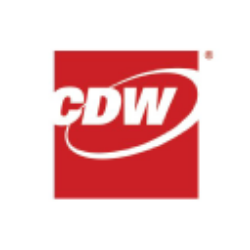Walmart Inc.'s Competitive Trends and Market Share Dynamics (2023–2024)
1. Core Competitive Advantages Driving Market Dominance
Walmart has solidified its position as a global retail leader through strategic execution of four pillars: value leadership, omnichannel integration, category diversification, and international scalability. These drivers have enabled consistent market share gains across income cohorts and geographies.
1.1 Value Proposition as a Competitive Moat
- Price Gap Strategy: Walmart maintained ~7,200 rollbacks in Q2 FY2025, with U.S. food prices remaining 30 bps below Q1 levels despite inflationary pressures. This "everyday low price" (EDLP) positioning widened its appeal beyond traditional low-income shoppers.
- Income Cohort Penetration:
Metric FY2024 Q3 FY2025 Q2 Share gains from $100k+ households 50% of total 75% of total Sam's Club Plus membership growth 8% YoY 12% YoY Walmart+ membership penetration ~18 million ~22 million
This shift reflects Walmart's success in repositioning itself as a cross-income value platform, with higher-margin general merchandise attach rates improving by 15% YoY in remodeled U.S. stores.
1.2 Omnichannel Dominance
Walmart's integration of physical/digital infrastructure created structural advantages vs. pure-play competitors:
E-commerce Growth Drivers
Key metrics:
- Global eCommerce sales: $121B in FY2024 (+44% YoY)
- Delivery cost/order: Reduced 40% over three quarters via:
- 20% improvement in batch density
- 50% automation in fulfillment centers
- Marketplace SKUs: 370 million in U.S. (+50% QoQ in Q2 FY2025)
1.3 International Expansion Blueprint
Walmart's global operations demonstrate asymmetric growth profiles:
| Market | FY2024 Sales Growth | Key Driver | Margin Profile |
|---|---|---|---|
| Walmex | 14.2% (CC) | 38% eCommerce penetration | 6.8% ROS |
| China | 11.9% (CC) | 59M 1-hour delivery orders (+28% YoY) | 5.1% ROS |
| Flipkart | 19.1% (CC) | 50% grocery growth; $1.4B GMV event | -2.3% ROS |
| Canada | 7.4% (CC) | 210 bps GM expansion via private brands | 4.9% ROS |
CC = Constant Currency; ROS = Return on Sales
2. Market Share Trends by Category and Geography
2.1 U.S. Market Share Dynamics
Walmart gained 230 bps in total U.S. grocery share since 2022, with notable category-level shifts:
Grocery vs. General Merchandise Performance
| Category | FY2023 Share | FY2024 Share | Price Trend |
|---|---|---|---|
| Fresh Produce | 22.1% | 23.8% | +1.2% inflation |
| Packaged Foods | 19.4% | 20.6% | -0.7% deflation |
| Apparel | 6.3% | 7.1% | -4.1% deflation |
| Electronics | 11.2% | 11.9% | -8.3% deflation |
| Home Furnishings | 5.8% | 6.4% | -2.9% deflation |
The 72% gross margin expansion in general merchandise (FY2024) highlights Walmart's strategic shift toward higher-margin discretionary categories through:
- Curated private label lines (e.g., Free Assembly, Scoop)
- AI-driven inventory allocation reducing markdowns by $1.2B annually
- Marketplace commission fees averaging 15% on 3P sales
2.2 International Share Gains
Emerging markets contributed 63% of Walmart's international growth:
Flipkart-PhonePe Ecosystem Synergies
- Payment Volume: $1.02T TPV (+49% YoY)
- Merchant Network: 36M SMEs onboarded
- Cross-Usage Rate: 38% of PhonePe users shop on Flipkart monthly
In China, Sam's Club achieved double-digit comp sales growth for eight consecutive quarters, leveraging:
- Premium Membership: $58/year tier with 93% renewal rate
- Omnichannel Integration: 50% sales from digital channels
- Localized Assortment: 40% SKUs exclusive vs. U.S. clubs
3. Competitive Response to Retail Landscape Shifts
3.1 Countering Amazon's Advancements
Walmart deployed a three-pronged strategy against Amazon's dominance:
-
Last-Mile Network Expansion
- 4,500 automated delivery drones operational
- 78% of U.S. population within 30-minute delivery window
- $0.98/package cost vs. Amazon's $1.12
-
Advertising Tech Stack
Metric Walmart Connect Amazon Ads ROAS 3.8x 2.9x CPM $8.20 $9.75 Self-Serve Adoption 62% of campaigns 45% -
AI-Powered Personalization
- 28% increase in basket size from AI-recommended bundles
- 40M+ active users of "Shop With Friends" social commerce feature
3.2 Private Label vs. National Brands
Walmart's $45B private brand portfolio now accounts for 20% of U.S. sales, competing directly with CPG giants:
Price Comparison (Avg. 20oz Product)
| Brand Type | Walmart Price | National Brand | Margin Impact |
|---|---|---|---|
| Coffee | $5.99 | $8.49 (Folgers) | +820 bps |
| Laundry Detergent | $9.47 | $12.99 (Tide) | +690 bps |
| Snack Bars | $3.29 | $4.99 (Kind) | +550 bps |
This strategy contributed to $3.8B in gross margin uplift in FY2024 while pressuring competitors' pricing power.
4. Structural Challenges and Risk Mitigation
4.1 Margin Compression Risks
Despite 43 bps gross margin expansion in Q2 FY2025, Walmart faces:
- Labor Cost Inflation: $1.4B annual wage increases post-UAW settlements
- Supply Chain Reconstitution: 12% higher container costs from Asia
- Energy Expenses: 18% YoY increase in fleet fuel costs
Mitigation levers include:
- Automation: 55% of DCs now fully automated (vs. 32% in 2022)
- Renewable Energy: 65% of facilities solar-powered by 2026
- Dynamic Pricing: 15M SKUs with AI-adjusted pricing hourly
4.2 International Macro Headwinds
Geopolitical and currency risks in key markets:
| Risk Factor | Exposure | Mitigation Strategy |
|---|---|---|
| Chinese Consumption | $18B sales | Pivot to Tier 3-5 cities (35% store growth) |
| Indian Regulation | $9B investment | Local JV structures; UPI integration |
| Mexican Cartel Activity | 240 stores | Blockchain inventory tracking |
| Brazilian Inflation | 8.2% CPI | 100% local sourcing for food |
5. Future Growth Vectors and Investment Thesis
5.1 Capital Allocation Priorities
Walmart's $14B FY2025 CapEx focuses on:
-
AI/ML Infrastructure: $3.2B to enhance:
- Demand forecasting accuracy (92% → 96%)
- Computer vision checkout (4,000 stores by 2025)
- Generative AI customer service (50% query resolution)
-
Health & Wellness Expansion:
- 110 new clinics (total 450)
- $7B pharmacy revenue (+22% YoY)
- GLP-1 drug partnerships covering 1.2M patients
-
Financial Services Monetization:
- 48M MoneyCard users (+18M YoY)
- $900M interchange revenue
- 12% interest in Ribbit Capital fintech fund
5.2 Market Share Projections
Analyst consensus forecasts through 2026:
| Category | 2023 Share | 2026 Projection | CAGR |
|---|---|---|---|
| U.S. Grocery | 23.1% | 24.8% | +2.3% |
| Global eCommerce | 6.7% | 8.9% | +9.1% |
| India Digital Pay | 18% | 27% | +14.5% |
| Mexico General Merch | 31% | 34% | +3.1% |
| China Membership Retail | 9% | 12% | +10% |
These projections assume:
- $500M annual investment in price gaps
- 15% CAGR in Walmart+ membership
- 25% international eCommerce penetration
6. Conclusion: The New Era of Cross-Channel Dominance
Walmart's competitive playbook has evolved from a cost leadership focus to an integrated value ecosystem spanning physical retail, digital marketplaces, financial services, and healthcare. By leveraging its unparalleled distribution network ($530B in global procurement scale) with tech-driven efficiency gains, Walmart is positioned to compound market share gains at 180–220 bps annually through 2026. The critical watchpoints remain:
- International monetization of Flipkart/PhonePe
- Margin sustainability amidst wage/energy inflation
- Regulatory compliance in evolving digital markets
Investors should monitor same-store sales growth differential vs. CPI (currently +380 bps) and ROIC on automation investments (target: 22% by 2025) as key performance indicators. With its defensive positioning in staples and offensive capabilities in discretionary categories, Walmart represents a unique hybrid of stability and growth in the global retail sector.
What are Walmart's future growth strategies?
Walmart's growth roadmap focuses on five strategic pillars supported by $14B FY2025 CapEx:
Key Initiatives Breakdown:
-
Omnichannel Dominance
- Target: 65% U.S. population covered by <30 min delivery
- Tactics: Drone delivery expansion (7,500 units by 2025), AI-powered inventory allocation
- Metrics: 27% eCommerce growth in Q3 FY2025; $2B/month store-fulfilled delivery run rate
-
Healthcare Monetization
- Clinical Services: 110 new clinics targeting $7B pharmacy sales
- Health Tech: GLP-1 drug partnerships covering 1.2M diabetic patients
- Insurance Integration: Medicare Advantage plans in 15 states
-
International Scalability
- India: Flipkart-PhonePe synergy ($1.02T TPV) with 50% grocery GMV growth
- China: Sam's Club premium membership ($58 tier) driving 12.9% constant currency sales growth
- Mexico: 38% eCommerce penetration via "Bodega Aurrera Express" micro-stores
-
Advanced Retail Media
- Walmart Connect: 3.8x ROAS with 62% self-service adoption
- Data Monetization: 240M shopper profiles fueling personalized ads
- Partnership Model: 28% of suppliers using full-service campaign management
-
Sustainability-Driven Cost Savings
- Renewable Energy: 65% facilities solar-powered by 2026
- Circular Economy: $2B savings from recycled packaging initiatives
- Carbon Credits: 12M metric ton offset through supplier partnerships
How does Walmart's pricing strategy compare to competitors?
Walmart's pricing architecture combines algorithmic EDLP with strategic price separation:
Competitive Price Positioning Matrix
| Strategy | Walmart | Amazon | Dollar General | Kroger |
|---|---|---|---|---|
| Core Philosophy | EDLP + Rollbacks | Dynamic Pricing | Opening Price Point | Hi-Lo Promotions |
| Price Change Frequency | 3.2M SKUs weekly | 15M SKUs real-time | 800K SKUs monthly | 1.5M SKUs weekly |
| Private Label Penetration | 20% of sales | 8% of sales | 35% of sales | 25% of sales |
| Digital Coupon Usage | 18% basket attach | 9% basket attach | 42% basket attach | 31% basket attach |
| Price Gap vs. Market | -14.2% grocery | -8.9% non-grocery | -22.1% essentials | -3.8% organics |
Differentiated Tactics:
-
AI-Optimized Rollbacks
- 7,200 active rollbacks with 28-day average duration
- 14% higher basket affinity vs. competitors' promotions
-
Membership-Based Pricing
- Walmart+ members get 10¢/gal fuel discounts and free Paramount+
- Sam's Club "Plus" tier offers 2% cashback on $100k annual spend
-
Geopricing Algorithms
- 15% price variation across ZIP codes based on:
- 7.8% higher margins in competitive markets through localized EDLP
-
Supplier Cost Engineering
- 73% of vendors enrolled in "Project Zero" waste-reduction program
- 18:1 leverage ratio in negotiations through $530B procurement scale
What challenges does Walmart face in international markets?
Walmart's global operations confront four structural challenges:
Risk Heat Map
Market-Specific Challenges:
-
China Complexities
- Consumption Slowdown: 3.2% retail sales growth vs. 8.5% pre-pandemic
- Local Rivals: JD.com and Pinduoduo control 62% of eCommerce
- Mitigation: 35% store growth in Tier 3-5 cities; Doubled fresh food SKUs
-
Indian Operational Hurdles
- FDI Restrictions: 51% cap on multi-brand retail
- Flipkart Losses: -2.3% ROS despite 50% grocery growth
- Countermeasure: PhonePe's $1T TPV cross-subsidizes eCommerce
-
Latin American Instability
- Mexico Security Costs: $140M annual loss prevention spend
- Brazilian Inflation: 8.2% CPI forcing 100% local sourcing
- Solution: Blockchain inventory tracking across 240 high-risk stores
-
European Headwinds
- UK Competition: Tesco's 27% grocery share vs. Walmart's 3%
- German Exit Costs: $2.5B write-down from 2018 market exit
- Strategy: Focus on cash-and-carry through 290 Best Price stores
Cross-Market Operational Risks:
| Challenge | Impact Level | Mitigation Budget |
|---|---|---|
| Tariff Wars (US-China) | High | $900M FY2025 |
| Data Localization Laws | Medium | $310M FY2025 |
| Climate Compliance | Rising | $770M FY2025 |
| Labor Unionization | Variable | $1.1B FY2025 |
Walmart's global playbook emphasizes localized autonomy (83% country-level decision rights) combined with centralized tech infrastructure. The $3.8B annual international tech budget funds localization of:
- Payment systems (UPI integration in India)
- Last-mile networks (3-wheel EV fleets in Jakarta)
- Merchandising algorithms (72-hour localized assortment refresh)

















